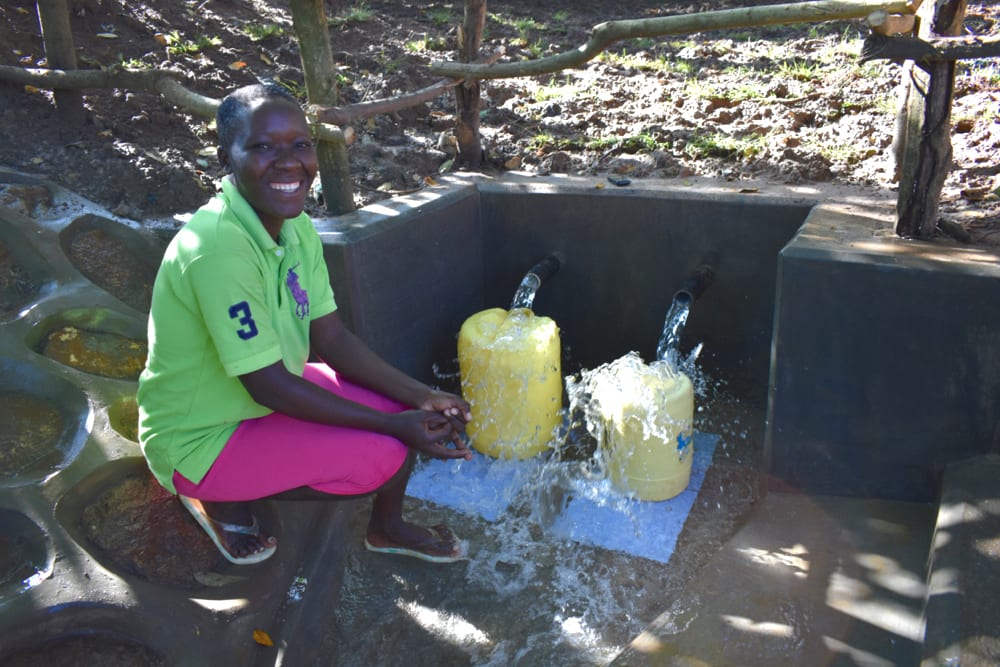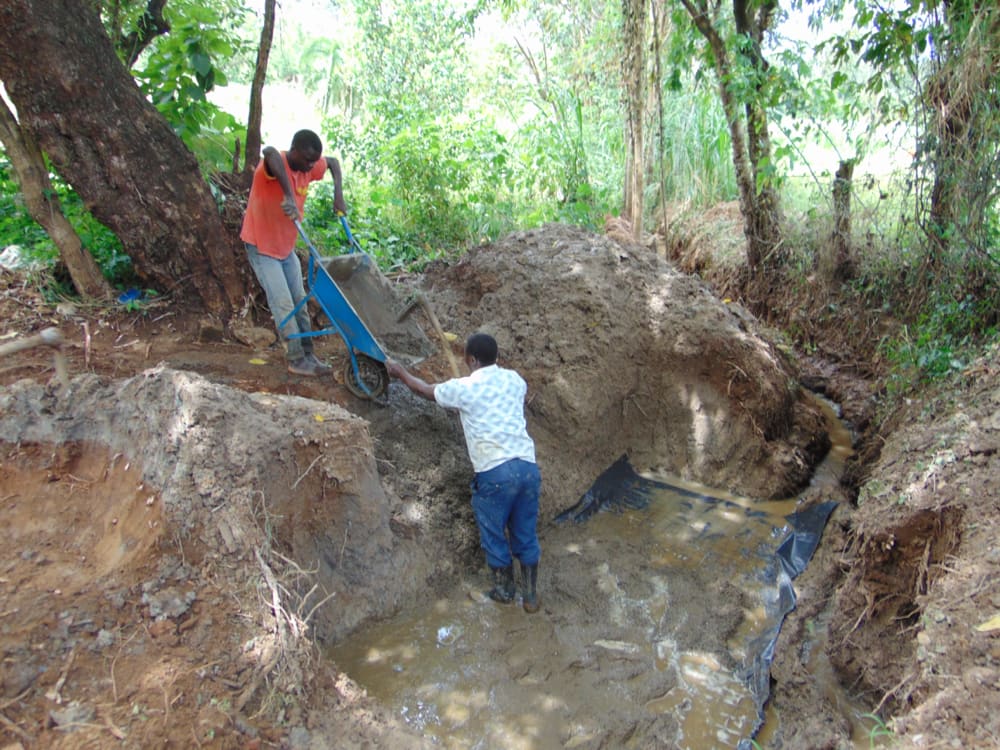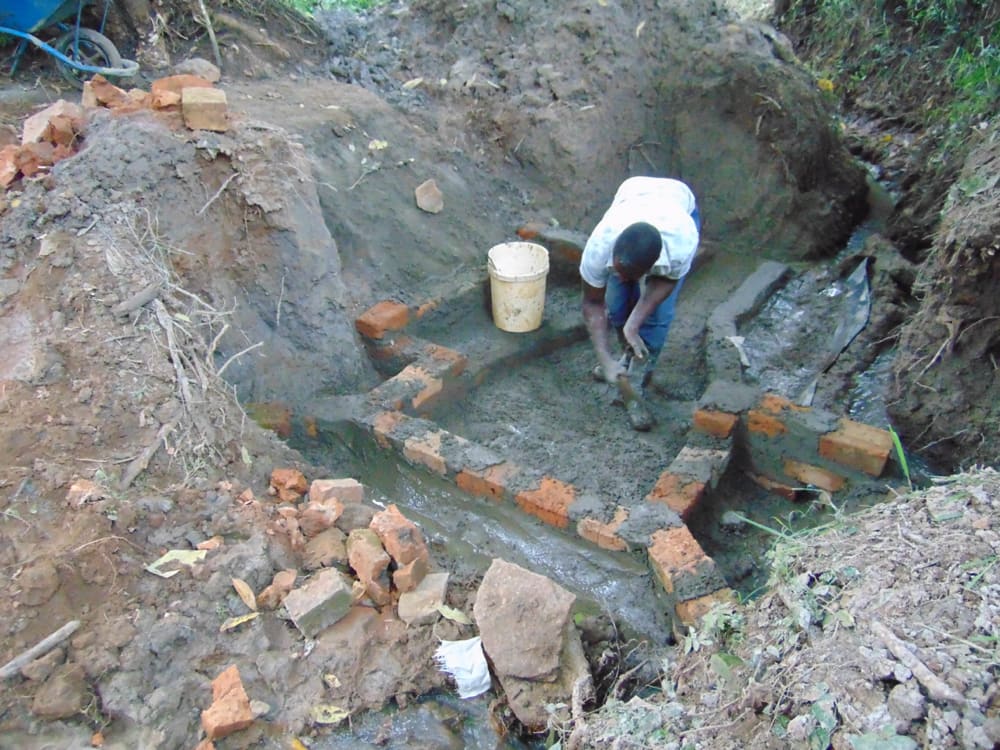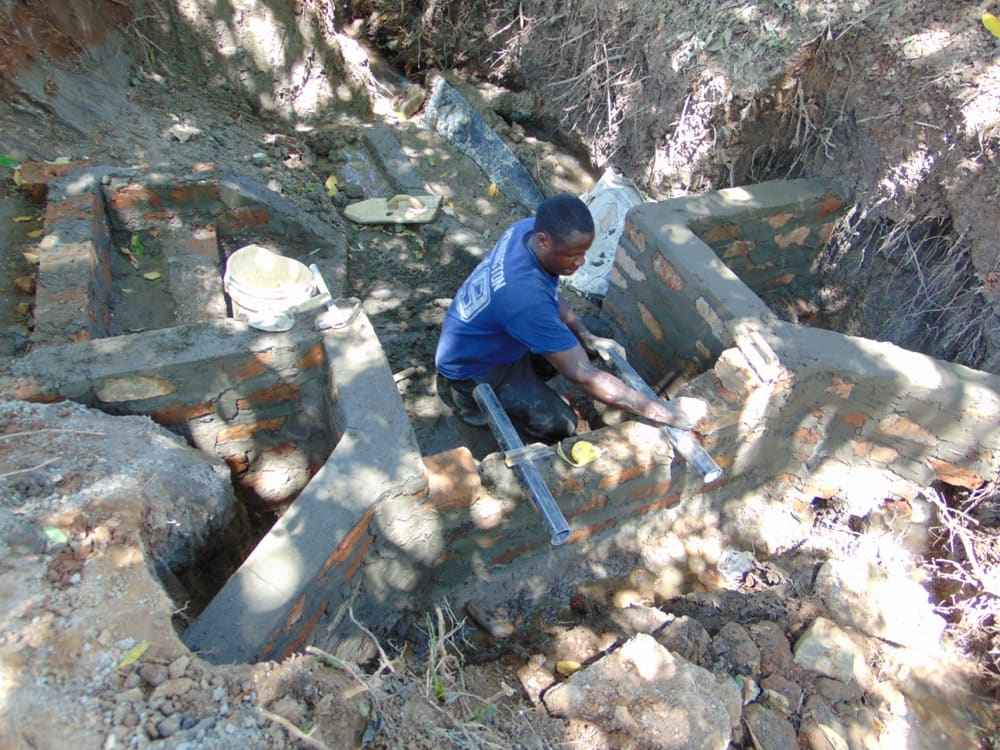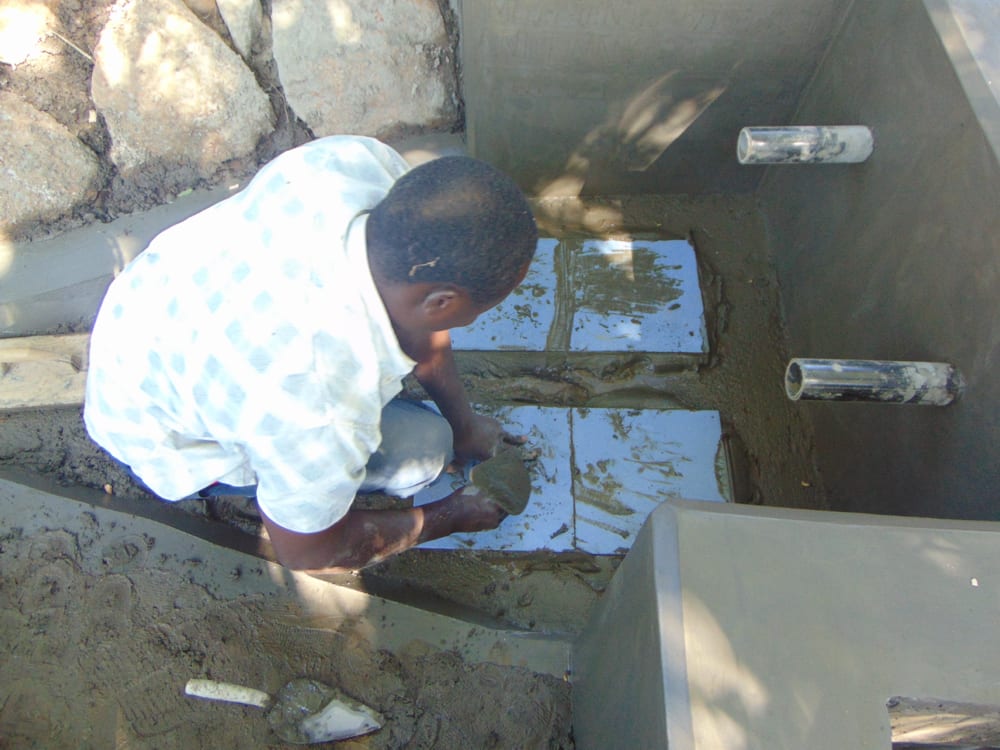Kimang'eti is a cosmopolitan community; many people from different parts of the country have come together and are living in harmony here, thus encouraging peace for they all depend on each other. Most community members in this area do agribusiness where many are planting crops to sell in the market for their livelihood. Local crops include maize, vegetables, sweet potatoes, and cassavas. Many families pay their children's school fees with money that comes from their farm produce.
For the 210 people in Kimang'eti who depend on Kimang'eti Spring for all of their daily water needs, every day is a challenge for the spring cannot produce clean or safe water. The water is open to all sources of contamination, and it looks like a just small puddle or stream carved out into a muddy terrace. To draw water, community members must first submerge their containers into the shallow spring. Then, they must use either a jug or a small plastic can (which typically have their own algae and dirt in them) to scoop water from the ground and pour it into their containers.
The entire process is time-consuming and frustrating, and each person stirs up mud in the water no matter how careful they are. Though people try to wait to let the water settle between users, most people need to fetch water at the same time in the morning, afternoon, and evening, so they can only wait so long. Time lost to fetching water means delayed work at home, on the farm, and at school for kids. The crowds at the spring are especially concerning during the pandemic, when community members are trying to avoid groups and limit their time spent in public.
Another challenge community members report is the high rate of water-related illnesses due to drinking the spring's contaminated water. People most commonly contract diarrhea, typhoid, and cholera from drinking the contaminated spring water. Recently, community members said, they even found a fecal deposit right next to where they draw water. This was a clear indicator that the water was unsafe for drinking, in addition to the other contaminants already in it such as farm chemicals, animal waste, and soil washed in with runoff from the rains. They often find animals drinking straight from the source as well.
But the community members do not have an alternative water source within walking distance, so they must fetch water regardless of its poor quality.
"The water would be good but the environment is very dirty. This affects me in a way that if the water is not boiled or treated, then I have to buy [water or treatment methods]. This is an extra budget cost which strains my finances," said 32-year-old farmer and mother Agnes.
"The dirty water I take from the water point causes me to diarrhea and I end up missing school most of the days as I am always in and out of the hospital for treatment," teenager Brenda added.
What We Can Do:
Spring Protection
Protecting the spring will help provide access to cleaner and safer water and reduce the time people have to spend to fetch it. Construction will keep surface runoff and other contaminants out of the water. With the community’s high involvement in the process, there should be a good sense of responsibility and ownership for the new clean water source.
Fetching water is a task predominantly carried out by women and young girls. Protecting the spring and offering training and support will, therefore, help empower the female members of the community by freeing up more of their time and energy to engage and invest in income-generating activities and their education.
Training on Health, Hygiene, COVID-19, and More
To hold trainings during the pandemic, we work closely with both community leaders and the local government to approve small groups to attend training. We ask community leaders to invite a select yet representative group of people to attend training who will then act as ambassadors to the rest of the community to share what they learn. We also communicate our expectations of physical distancing and wearing masks for all who choose to attend.
The training will focus on improved hygiene, health, and sanitation habits in this community. We will also have a dedicated session on COVID-19 symptoms, transmission routes, and prevention best practices.
With the community’s input, we will identify key leverage points where they can alter their practices at the personal, household, and community levels to affect change. This training will help to ensure participants have the knowledge they need about healthy practices and their importance to make the most of their water point as soon as water is flowing.
Our team of facilitators will use a variety of methods to train community members. Some of these methods include participatory hygiene and sanitation transformation, asset-based community development, group discussions, handouts, and demonstrations at the spring.
One of the most important issues we plan to cover is the handling, storage, and treatment of water. Having a clean water source will be extremely helpful, but it is useless if water gets contaminated by the time it is consumed. We and the community strongly believe that all of these components will work together to improve living standards here, which will help to unlock the potential for these community members to live better, healthier lives.
We will then conduct a small series of follow-up trainings before transitioning to our regularly scheduled support visits throughout the year.
Training will result in the formation of a water user committee, elected by their peers, that will oversee the operations and maintenance of the spring. The committee will enforce proper behavior around the spring and delegate tasks that will help preserve the site, such as building a fence and digging proper drainage channels. The fence will keep out destructive animals and unwanted waste, and the drainage will keep the area’s mosquito population at a minimum.
Sanitation Platforms
At the end of the training, participants will select 5 families that should benefit from new concrete latrine floors called sanitation platforms. Training will inform the community and selected families on what they need to contribute to make this project a success. They must mobilize locally available materials, including bricks, clean sand, and gravel.
The 5 families chosen for sanitation platforms must prepare by sinking a pit for the sanitation platforms to be placed over. Our trainers then instruct them on how to build superstructures over their new platforms. These 5 sanitation platforms will serve as examples for the rest of the community to replicate.
All community members must work together to make sure that they continuously provide accommodations and food for the work teams throughout all stages of spring and sanitation platform construction.



 Rehabilitation Project
Rehabilitation Project












